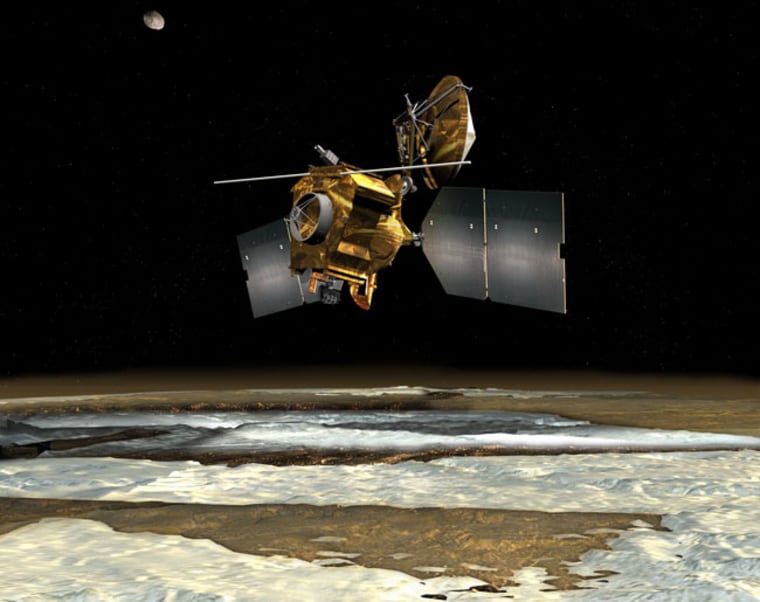NASA's Mars Reconnaissance Orbiter has suffered an apparent glitch that has left the spacecraft in a protective safe mode and stalled science observations as it circles the Red Planet, the space agency announced late Wednesday.
The malfunction occurred on Monday when the orbiter unexpectedly rebooted its main computer and entered safe mode, an automatic safeguard designed to protect the spacecraft from further damage when it detects a glitch.
NASA engineers are reviewing potential causes for the malfunction aboard the Mars Reconnaissance Orbiter, or MRO, in the hopes of resuming its science observations of the red planet.
"We are going to bring the spacecraft back to normal operations, but we are going to do so in a cautious way, treating this national treasure carefully," MRO project manager Jim Erickson said at NASA's Jet Propulsion Laboratory, Pasadena, Calif. "The process will take at least a few days."
The Mars orbiter's malfunction occurred Monday at about 7:25 a.m. ET, when the spacecraft was flying behind the Red Planet as seen from Earth. While MRO has suffered glitches that put it in safe mode five times since its 2005 launch, Monday's malfunction does not resemble any of those earlier glitches, NASA officials said.
An initial analysis suggests that the malfunction may have been caused by the detection of a power surge that lasted between 200 nanoseconds and 41 seconds. The power surge may have been real, or it could have been a phantom reading, mission managers said.
One theory is that the MRO spacecraft may have been hit by a cosmic ray, causing an erroneous power surge reading for about nine microseconds, more than enough time to trigger the computer reboot, mission managers said.
MRO flight engineers managed to bring about a partial revival of the spacecraft late Monday, when they boosted its communication rate from 40 data bits per second to a level some 10,000 times faster. The spacecraft's batteries are charged, and its expansive solar wings are generating electricity, mission managers said.
Launched in August 2005, the MRO spacecraft is NASA's youngest orbiter in a fleet of spacecraft circling the Red Planet. It arrived in orbit around Mars in October 2006 to begin a planned two-year mission. The spacecraft's initial $720 million mission has since been extended by two more years to 2010.
During its time at Mars, MRO has beamed home stunning vistas of the Red Planet and has tracked NASA's twin rovers Spirit and Opportunity during their exploration of the Martian surface.
The spacecraft has also used its high-resolution camera to scout for future Martian landing sites and spotted NASA's most recent probe — the Phoenix Mars Lander — as it parachuted down to a pinpoint landing on the planet's arctic plains in May 2008.
